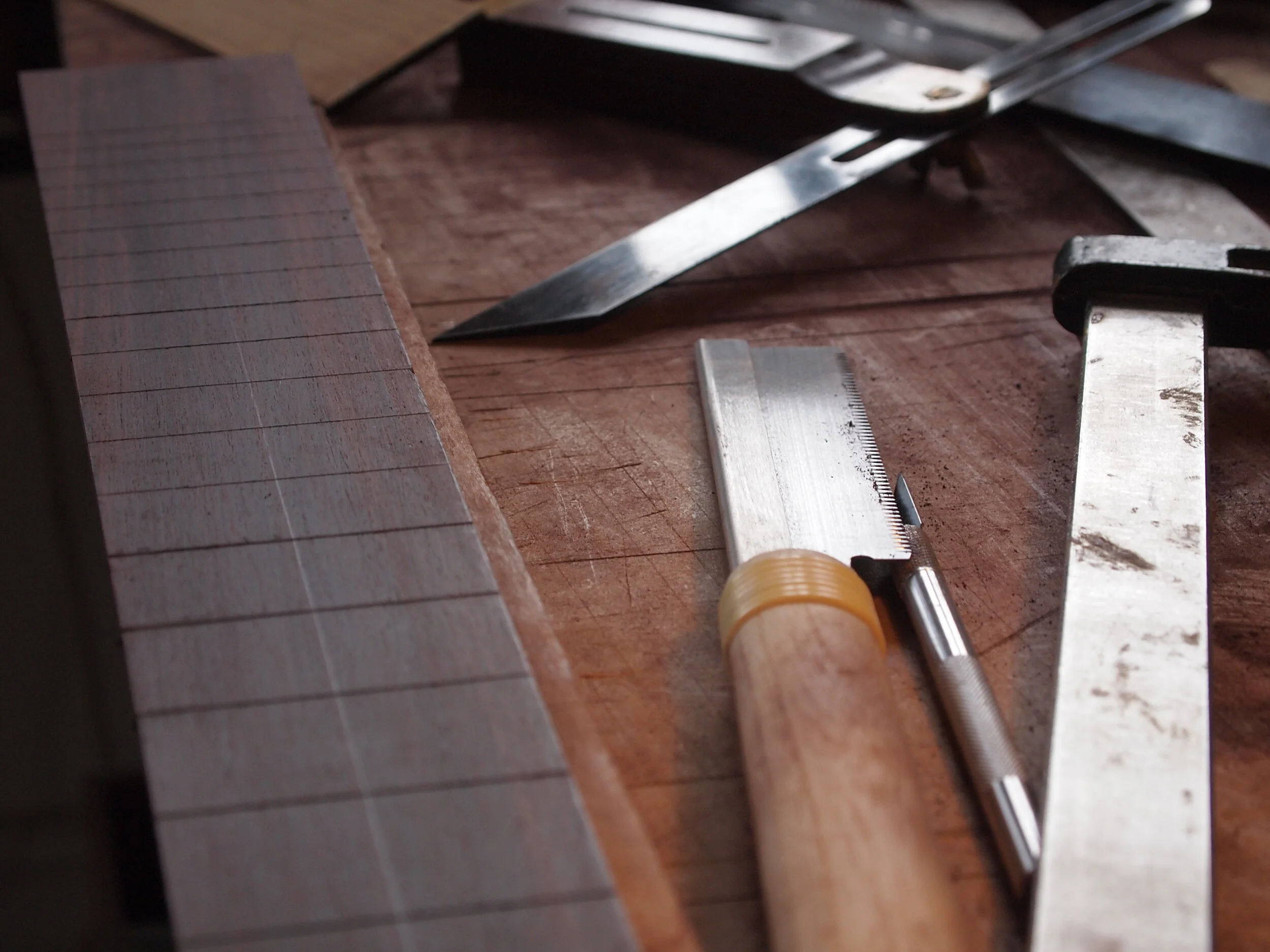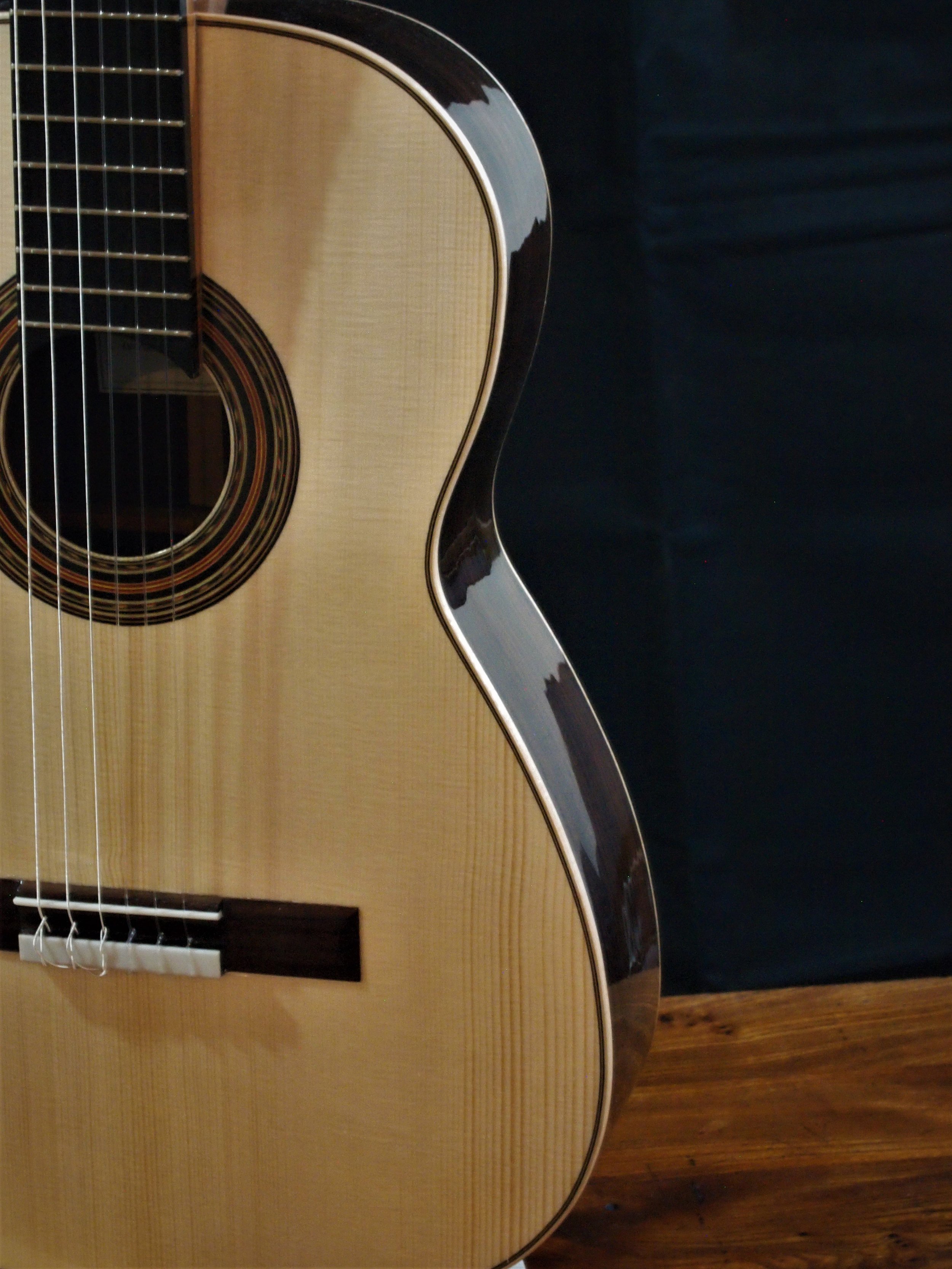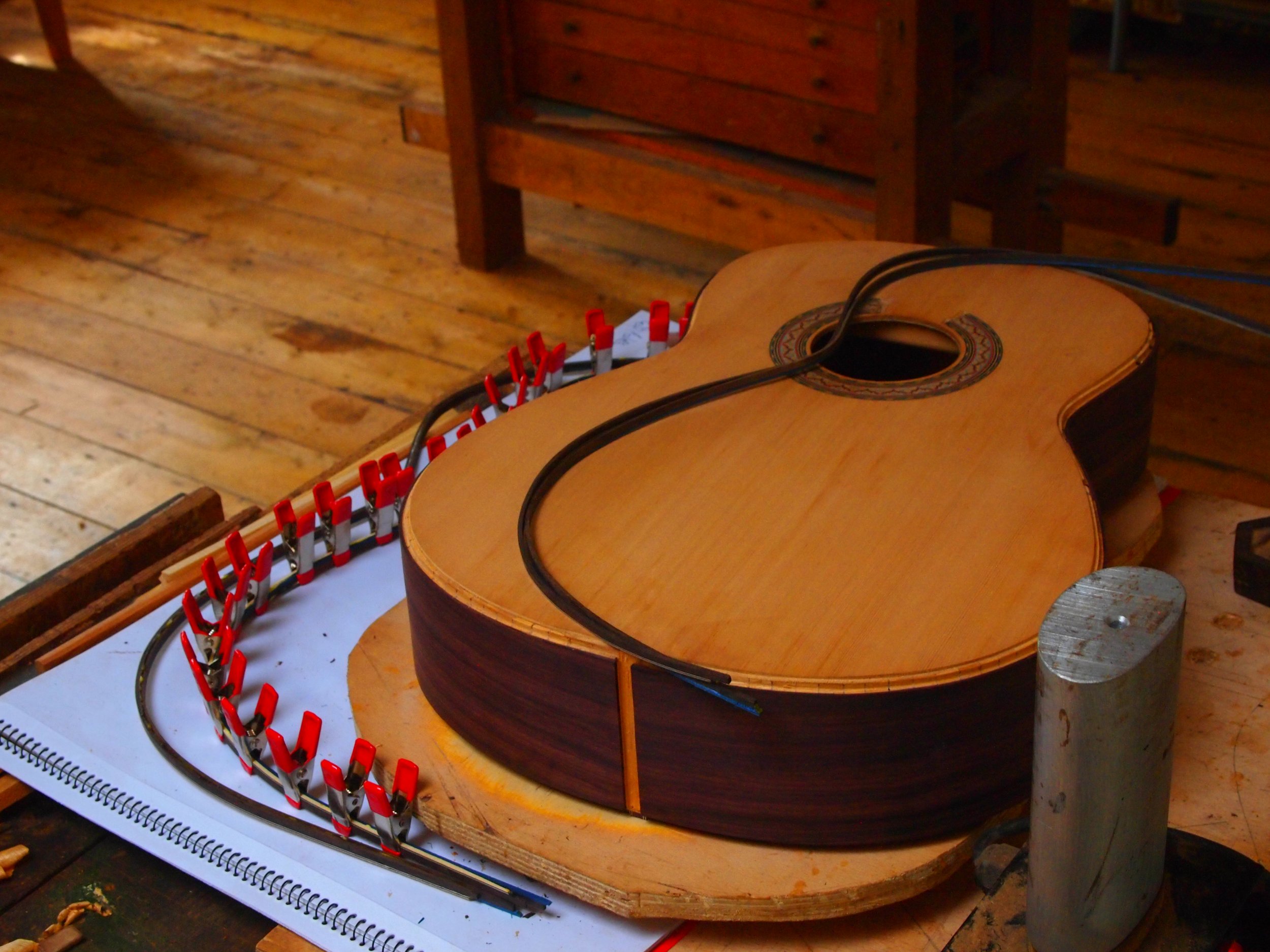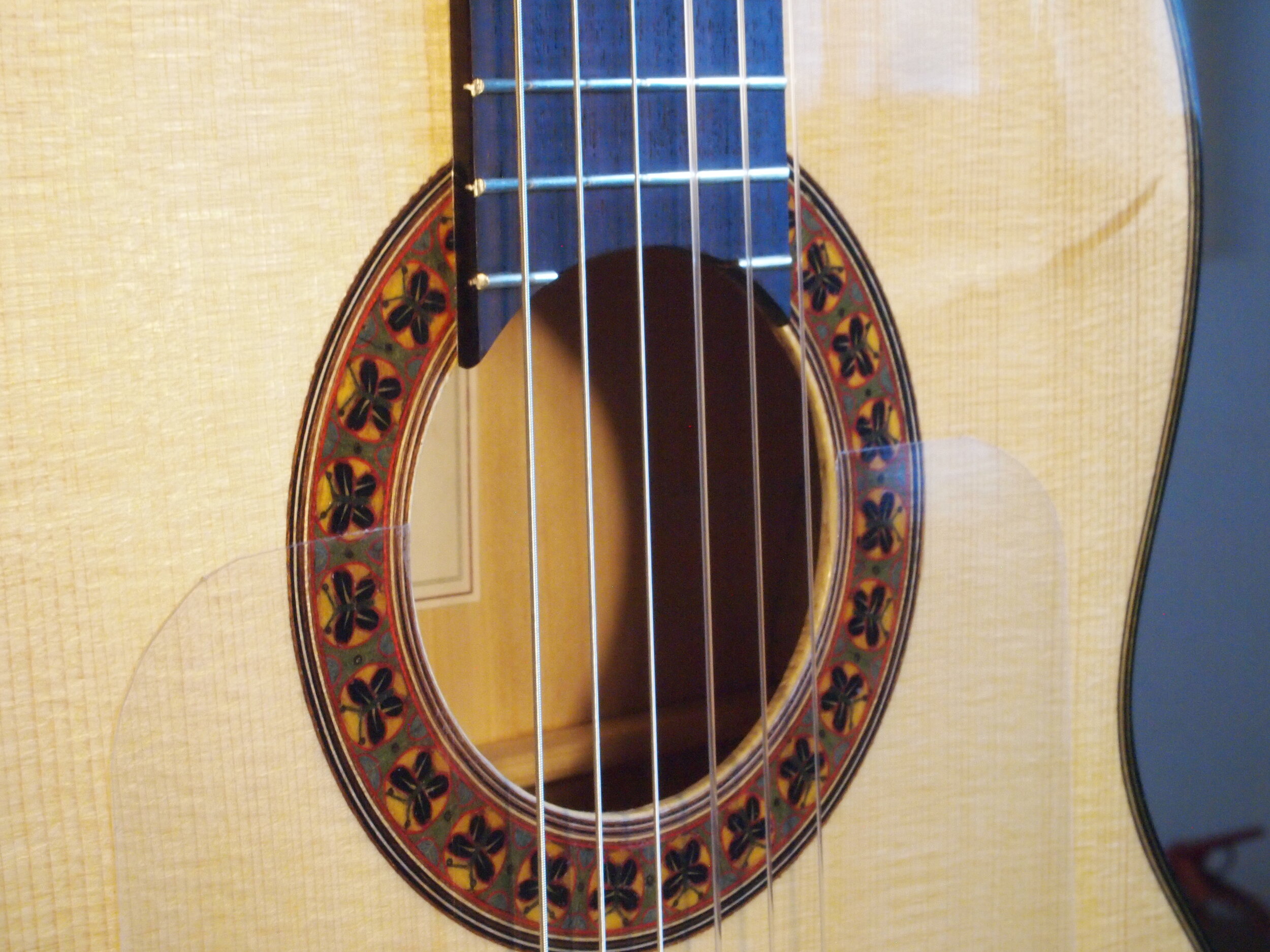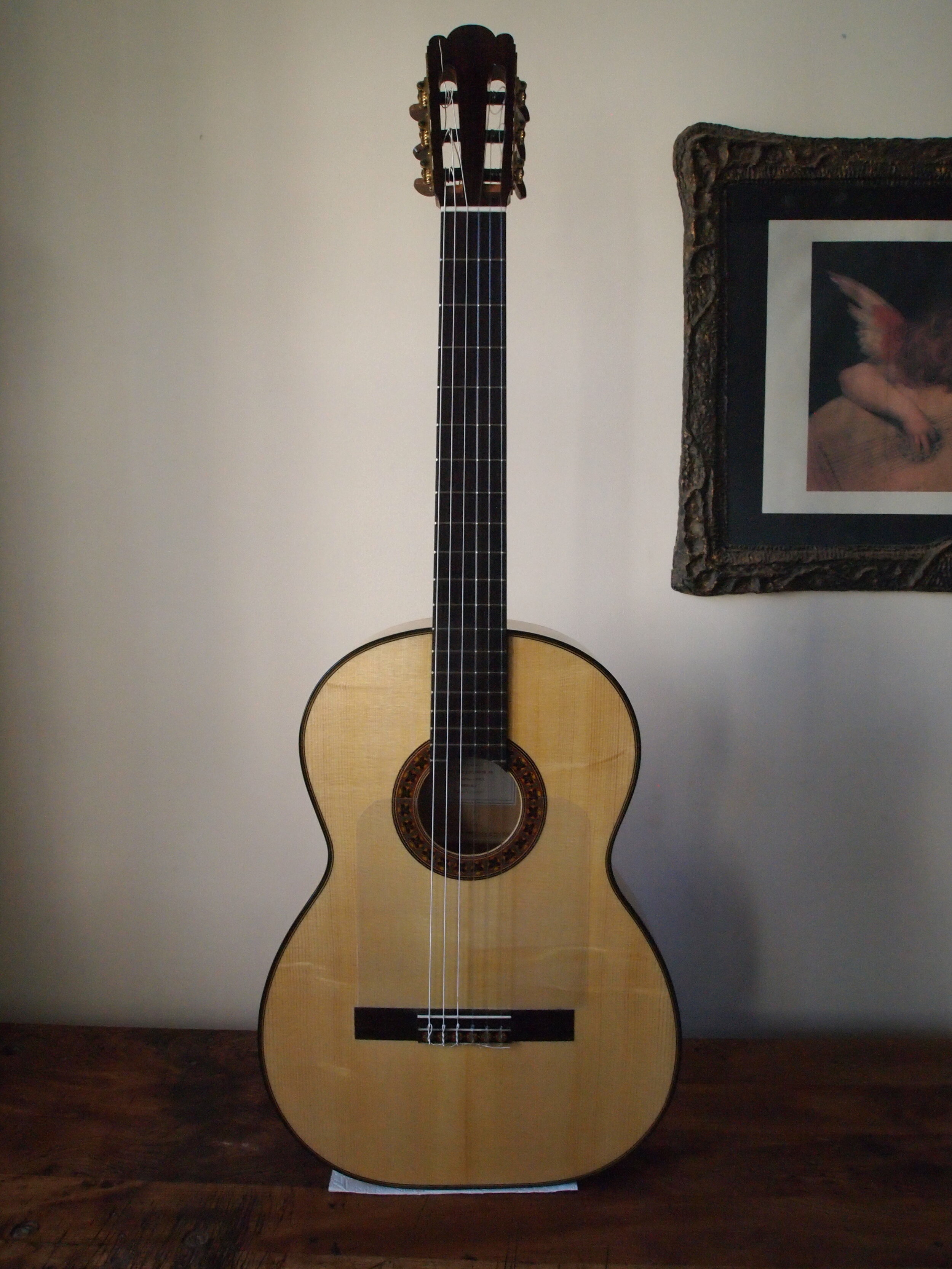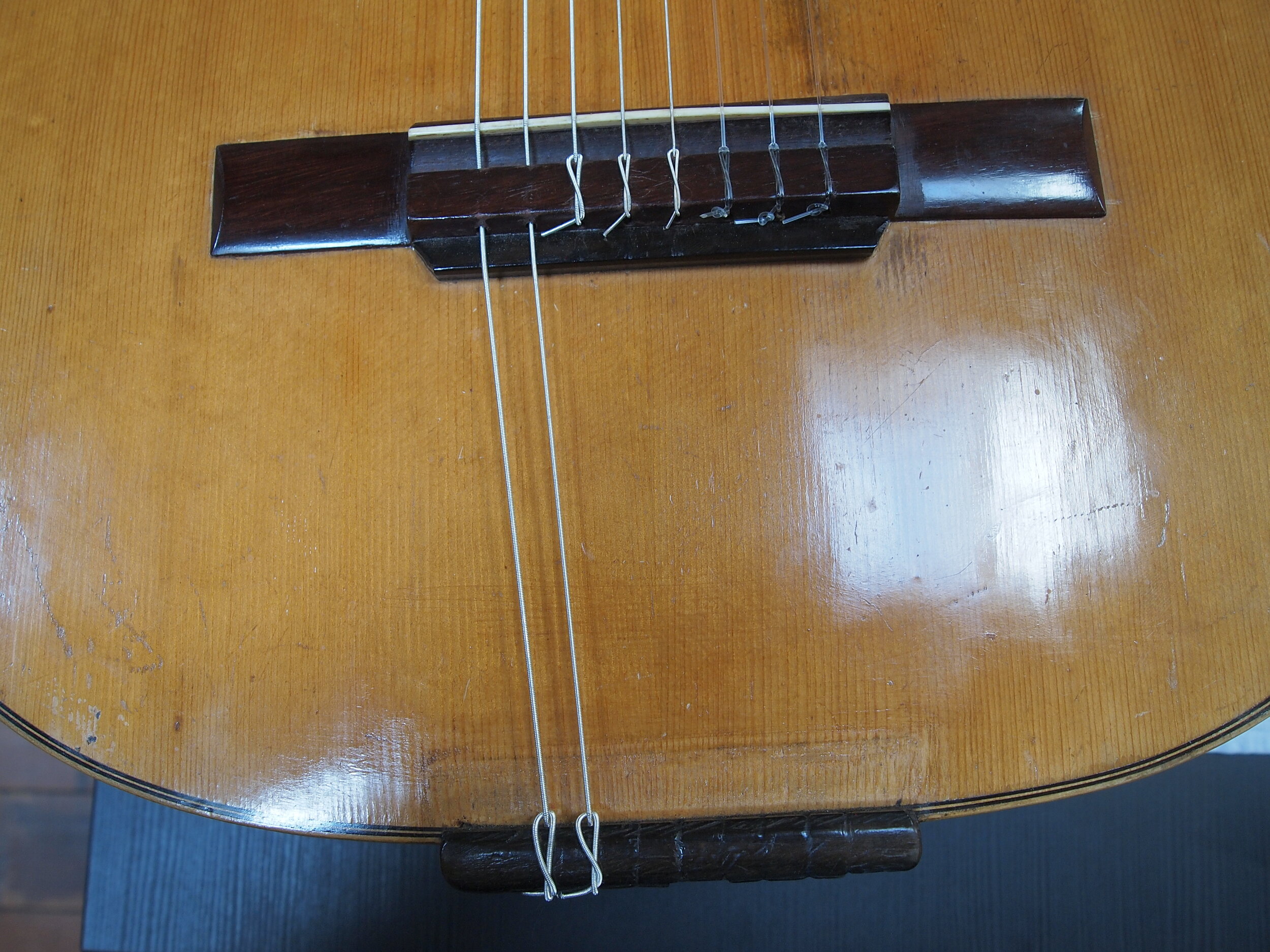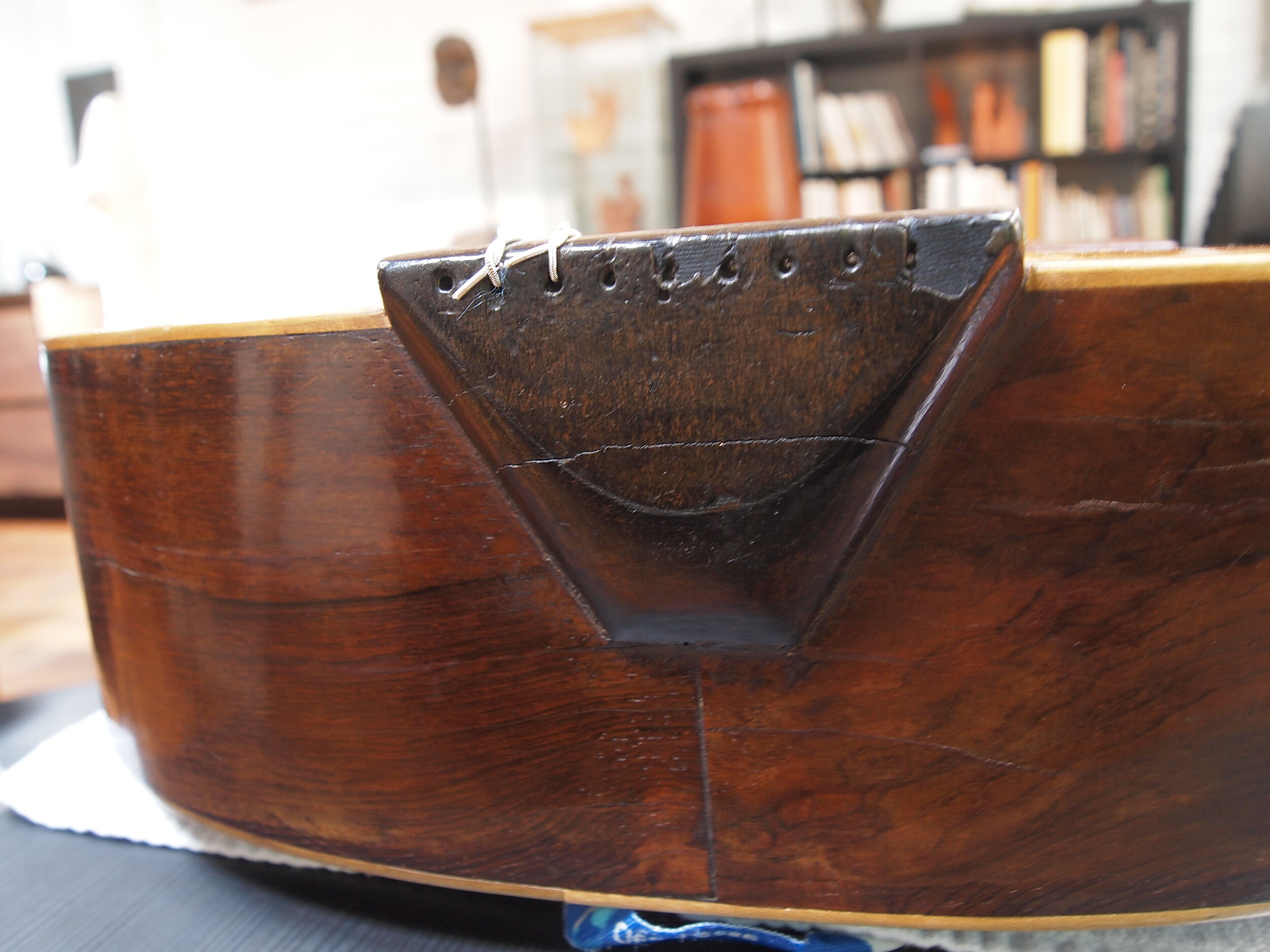I used a lacquer varnish, for my first 30 or so guitars, minus a couple here and there. I knew that French polish was considered the ‘gold standard’ in classical guitar making, but had become obsessed with mastering one finish before moving on to the next. However, I have recently started offering French polish and an oil finish on my guitars. All finishes has different advantages and disadvantages going for them, none are perfect but some can be more suitable for a particular person’s priorities.
Lacquer:
Lacquer can be buffed to a beautiful mirror gloss. (Writing this post has reminded me that for a while I have intended to read a book called Lacquer: An International History. I know that the earliest lacquerwork dates back to thousands of years ago in China and Japan.) For me, the advantage of lacquer is that once it’s finished and looking good, if a guitar is looked after, the lacquer should stay looking just as good many years down the line as it did on day one, with minimal fuss for the owner.
It is easy to care for; a wipe down with a slightly damp paper towel or cloth should be enough. The lacquer I use is really hard wearing, and a player won’t have to worry about using a cloth between their body and the guitar or anything like that.
I think it’s commonly known that French polish takes a long time and is hard to learn; that’s true but off the back of that comes the implication/assumption that a lacquer finish is easy. It’s not! Both are a tricky skills to learn and take time to execute, also both are easy in a way once the skill is truly learnt.
The disadvantages of lacquer: for the builder, getting the finish thin enough takes some time to learn, and it will never be quite as thin as French polish or oil; players often feel that a thick finish on the soundboard will inhibit the vibrating of the soundboard. Lacquer is also difficult to repair invisibly without a complete refinish of that particular surface.
I apply lacquer with a brush. After it’s dry I level with fine sandpaper. Then I buff by hand. Overall the process is quicker than French polish, but those last two steps take a good couple of long days and the buffing in particular is SO EXHAUSTING. In this way, there is definitely room for my lacquer process to be refined.
French Polish:
French polish is a method of applying a material called shellac. Shellac is dissolved in alcohol and then applied with a “rubber”, then the alcohol evaporates and you’re left with a very thin layer of shellac. It’s a very organic process. I have recently completed two French polished guitars and am feeling the French polishing vibe. I like the particular gloss I have gotten, it has a slightly softer more natural look to it than lacquer. It does look slightly more beautiful than lacquer, however as I mentioned there are downsides to be considered with any finish. For some people it might not be entirely practical, as a lacquer or oil finish would be.
The particular French polishing process I use is spread out over a month (there are many different methods), working an hour here and there sometimes in the morning or evening. So guitars can be built while another is being polished. It’s quite chill, especially when I think of the hectic couple of days at the end of my lacquer process.
I can speak less about the potential issues which might occur as I have more experience with lacquer and oil right now, however following general guitar care guidelines, as well as keeping and cloth between your right arm and the guitar, and occasionally wiping the guitar with a slightly damp paper towel/cloth; do all that and I don’t see there being any big issues.
For players who live in countries with really high humidity or who travel/tour around, a French polished instrument might just be too delicate.
Many luthiers offer a finish touchup after 6 months to a year on a new guitar. This is because the shellac will shrink considerably in the first year, however after it has done so this provides a good base for a touch up. French polish continues to develop and harden over the years.
Oil Finish
I’ve often thought that when I finally get round to building myself an instrument, I will finish it with a couple of coats of oil. Minimum fuss for the maker and the player, nothing to get in the way of the tone. There is never any danger of an oil finish cracking or blistering, as is possible with lacquer or French polish in certain conditions
I still prepare the wood the same way as I would for French polishing or lacquer. This means the grain of the wood is filled on open grained woods, and the end result is a smooth satin finish. I also seal the wood slightly to prevent the oil penetrating into the wood too deeply, minimizing any problems with oily rosewoods, and stopping an excess of oil of dampening the tone of the soundboard.
Again simply follow general guitar care guidelines should keep the guitar in ship shape. With an oil finish a guitarist may wish to keep a cloth between his right arm and the guitar to prevent it getting grubby.
Sometimes despite taking the greatest care a guitar will get dinged or scratched; one thing I like about oil finishes is that a scratches/dings don’t stand out so much on a surface which isn’t so glossy. I think that anything which harms an oil finished surface, would have done more noticeable damage to French polish; as far as durability goes lacquer is the winner. As well as lacquer, I think oil finishes would also be suitable for guitarists in high humidity countries where French polish can be problematic.
I will update this with some guidelines on general maintenance of an oil finish. I feel like an oiling once a year would help, and occasional wiping down with a slightly damp cloth. For cleaning serious grime, I will have to learn/come up with a method and update shortly.
